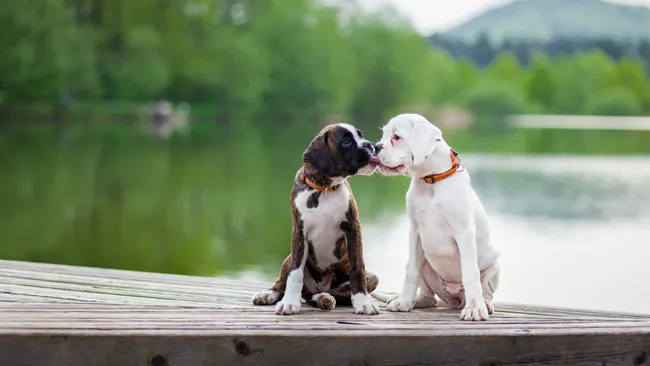Kissing is a multifaceted and emotionally loaded behavior. Do other animals do it, too?
Kissing plays a significant role in human culture, with ancient cuneiform tablets from Iraq indicating that humans have been kissing since at least 2500 B.C. Today, kissing is found across the world in various forms, whether for romance, familial affection, or as a friendly greeting.
Given how widespread this behavior is, it’s natural to question whether other species engage in similar actions and whether kissing has an evolutionary basis. But do animals kiss?
To answer that, we must first define what a kiss actually is, and this is trickier than it might seem.
Human kissing can vary from passionate makeouts to simple pecks on the cheek, and the meaning behind a kiss also matters. For example, a kiss during CPR may look like a kiss, but it serves a different purpose and doesn’t carry the same emotional connotation. Generally, human kissing is an expression of positive social sentiment, whether sexual, romantic, or platonic.
Sheril Kirshenbaum, author of The Science of Kissing: What Our Lips Are Telling Us, points out that there are various behaviors in the animal kingdom that could be seen as “kisses” – from turtles tapping heads to moose and ground squirrels brushing noses.
One clear example of an animal “kiss” is a dog licking its owner’s face. Dogs often lick to show affection, though this behavior can also serve other functions like grooming or enhancing their sense of smell. While this can appear similar to human kissing, it’s important to remember that animals may not view these actions with the same emotional context that humans do. For that reason, scientists refer to these as “kissing-like behaviors” rather than kisses.
In the African savanna, giraffes may intertwine their necks or brush faces and lips together. However, this is not an affectionate gesture; it’s a dominance display known as necking, used to establish social hierarchy.
When it comes to primates, humans are the only species capable of puckering their lips to kiss in the way we do. Bonobos, closely related to us, engage in frequent “kissing-like” behaviors. Bonobos are known for their promiscuous nature and often resolve conflicts with sexual behavior, rather than violence. While these behaviors are not technically “kisses,” they do involve lip contact and are a form of bonding, especially during grooming or food sharing.
Vanessa Woods, a researcher at Duke University, suggests that these kissing-like behaviors serve as a “relationship barometer” for bonobos. They often indicate close social bonds.
In fact, some scientists believe human kissing might have evolutionary roots in grooming behavior. According to researcher Adriano Lameira, ancient primates likely puckered their lips during grooming to remove bugs or debris, and as human ancestors lost their body hair, this final grooming step evolved into kissing, helping to maintain social bonds.
However, not all experts agree that this is the sole reason for kissing. Woods also believes that food sharing could have been another important factor in the development of mouth-to-mouth contact.
While the exact origins of kissing remain unclear, one thing is certain: While animals may exhibit behaviors that resemble kissing, the full range and meaning of human kissing is unique to our species.
